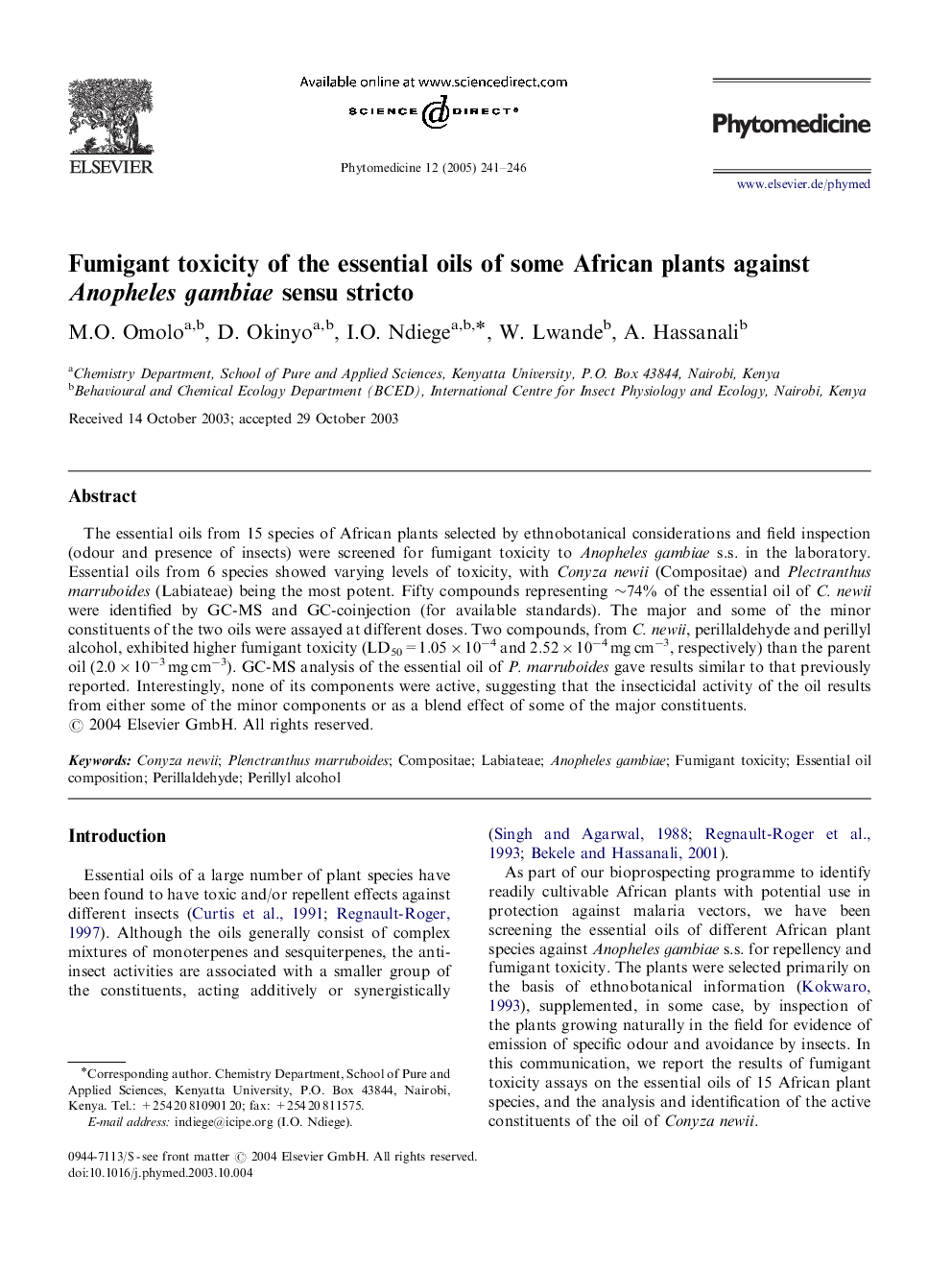| Article ID | Journal | Published Year | Pages | File Type |
|---|---|---|---|---|
| 8999866 | Phytomedicine | 2005 | 6 Pages |
Abstract
The essential oils from 15 species of African plants selected by ethnobotanical considerations and field inspection (odour and presence of insects) were screened for fumigant toxicity to Anopheles gambiae s.s. in the laboratory. Essential oils from 6 species showed varying levels of toxicity, with Conyza newii (Compositae) and Plectranthus marruboides (Labiateae) being the most potent. Fifty compounds representing â¼74% of the essential oil of C. newii were identified by GC-MS and GC-coinjection (for available standards). The major and some of the minor constituents of the two oils were assayed at different doses. Two compounds, from C. newii, perillaldehyde and perillyl alcohol, exhibited higher fumigant toxicity (LD50=1.05Ã10â4 and 2.52Ã10â4 mg cmâ3, respectively) than the parent oil (2.0Ã10â3 mg cmâ3). GC-MS analysis of the essential oil of P. marruboides gave results similar to that previously reported. Interestingly, none of its components were active, suggesting that the insecticidal activity of the oil results from either some of the minor components or as a blend effect of some of the major constituents.
Keywords
Related Topics
Life Sciences
Biochemistry, Genetics and Molecular Biology
Clinical Biochemistry
Authors
M.O. Omolo, D. Okinyo, I.O. Ndiege, W. Lwande, A. Hassanali,
